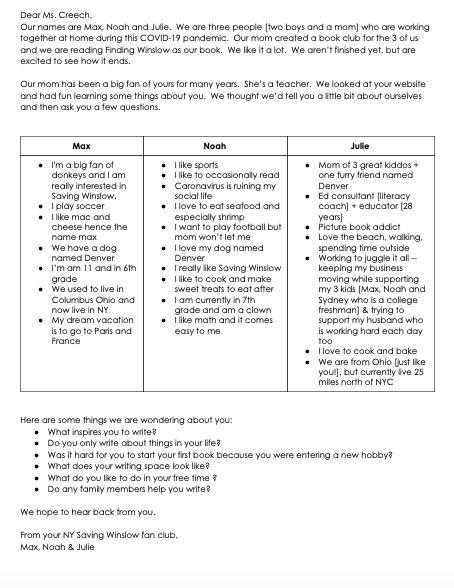Written by Julie Wright & Elizabeth Keim
We offer you Short Texts at Your Fingertips. Twice each week, we provide teaching ideas around a different type of short text that is easily found in the home, so that no family feels under-resourced. These ideas can integrate into virtually any curriculum and pedagogy, from Workshop to basal. If you are a caregiver, teacher, or curriculum director, these brief but mighty texts and lessons are our way of saying thanks. And our way of giving children authentic and enjoyable reading and writing engagements each day.
SHORT TEXTS AT YOUR FINGERTIPS: IMAGES & PICTURES
If we want students to read the world around them, we have to expand the types of texts that we ask them to read, inside and outside of school. Said another way—our kiddos deserve to read texts everyday that go beyond textbooks and test prep passages. In addition, they deserve to spend their learning time doing things that boost their curiosity, creativity and ingenuity.
Have you ever scrolled through your camera roll and found pictures that bring back great memories? Or, have you ever noticed a picture you don’t even remember taking? Images and pictures can be found everywhere and are great short texts to explore. They can be found in family photo albums, books, wall calendars, game board boxes, packaging from a recent delivery, or online. There are also lots of credible sources that share photos of the day or week. Here are a few examples:
TRY THIS!
Step 1
Grab any image or picture that you find in your house or online and ask:
What do you notice?
What do you wonder?
What do you think this image / photo is about?
Does it have a title or caption?
Who is the author?
Step 2
Take a closer look at the image / picture and discuss:
What does this image / picture make you think about?
What connections can you make?
How does this image / picture make you feel?
When do you think this image / picture was taken? For what reason?
Here’s an example of an image we love.
Here’s what we noticed:
This looks like a bee hive or a wasp nest.
it was hanging from a branch, but fell to the ground.
No bees or wasps are living in it right now.
Here’s what we wondered:
Is this a bee hive or wasp nest? What’s the difference?
How many bees or wasps would typically live here?
How long do the bees or wasps stay here?
Is this dangerous to be around?
Step 3
Look for other reading, writing and talking opportunities using this short text type.
Reading Ideas
Read/watch information about bees for a mini-inquiry study focused on one or more of the following ideas:
Bee swarms
Bee hives
Bee lifespan
Importance of bees to our environment
Bee stings/allergies
Products made from bees
Explore the Cincinnati Zoo and learn more about bees.
Watch a short video from National Geographic about bees.
Search, sort, and read infographics about bees. Examples can be found here.
Writing Ideas
Create a two column chart.
In the left-hand column, write things you think you know about bees.
In the right-hand column, write things you are wondering / things you want to know about bees.
Write/draw some ideas related to bees focused on one or more of the following ideas:
List of questions about bees
Create a top 10 list of bee facts
Draw the relationship between hives, bees, and flowers
Make your own informational bee book
Write bee and bug jokes.
Draw some pictures of bees. Use crayons, colored pencils, markers, or watercolors to add color.
Talking Ideas
Discuss the different types of bees and hives after watching All Things Animal TV about bees.
Read and talk about The Good of the Hive project by Matthew Wiley. Check out the About page for some background information.
Talk about bee idioms (the bee’s knees, busy as a bee, have a bee in one’s bonnet, queen bee)
Have a conversation about honey. Note: This conversation may lead to more reading, writing and talking.
Do you like honey? Why or why not?
What are the major honey companies? Where are they located?
What types of recipes include honey as a major ingredient?
Are there honey festivals? If so, when and where?
Why are honeycomb cells hexagonal?
Step 4
Look for other images / pictures that you find and read those too!
FOR MORE RESOURCES, CHECK THESE OUT!
The Bee Book by Charlotte Minor
Enjoy some jokes about bees and bugs here.
Look at Burt’s Bees and talk about the company’s purpose, People, Profit, Planet.
What do you think?
What ways could you go out and change the world for the greater good?
Explore bee poems (Do a quick search and lots of bee poems can be found. Reminder to preview them before sharing them.)
COMING SOON!
Short Texts: Mighty Mentors That Move Readers and Writers Forward by Julie Wright & Elizabeth Keim (2022)

